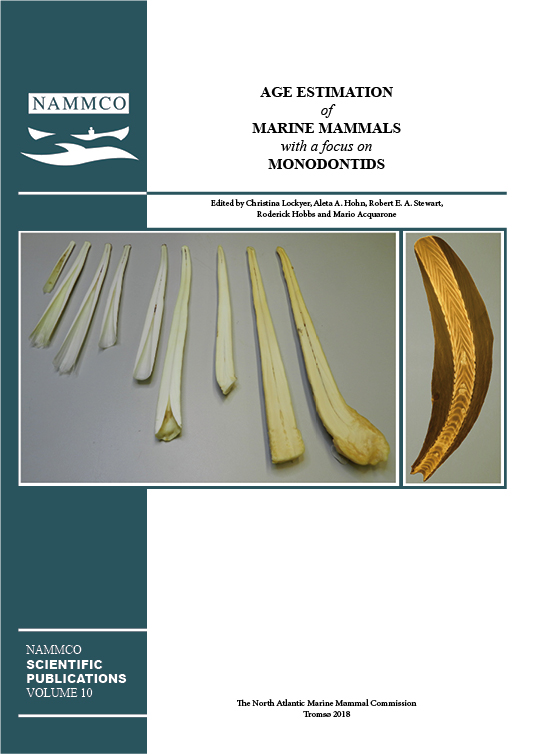Bomb dating, age validation and quality control of age determinations of monodontids and other marine mammals
DOI:
https://doi.org/10.7557/3.2987Keywords:
monodontids, age determination, bomb dating, validationAbstract
Methods for confirming the accuracy of age determination methods are reasonably well established in fishes, but the millions of routine age determinations which take place every year require their own quality control protocols. In contrast, methods for ensuring accuracy in age determination of monodontids and other marine mammals are still being developed. Here we review the basis and application of bomb radiocarbon to marine mammal age validation, highlighting its value for providing unambiguous estimates of age for belugas and other long-lived animals which form growth bands. Bomb radiocarbon is particularly useful for marine mammals, given that the age of an individual animal can be determined to within ±1-3 years, as long as it was alive during the 1960s. However, ongoing age determinations require careful monitoring to ensure that age interpretations remain consistent across ages and through time. Quality control protocols using reference collections of ageing material, in conjunction with age bias plots and measures of precision, are capable of detecting virtually all of the systematic ageing errors that often occur once age determinations of an animal become routine.Downloads
Published
2014-05-11
How to Cite
Campana, S. E., & Stewart, R. E. (2014). Bomb dating, age validation and quality control of age determinations of monodontids and other marine mammals. NAMMCO Scientific Publications, 10. https://doi.org/10.7557/3.2987
Issue
Section
Articles





